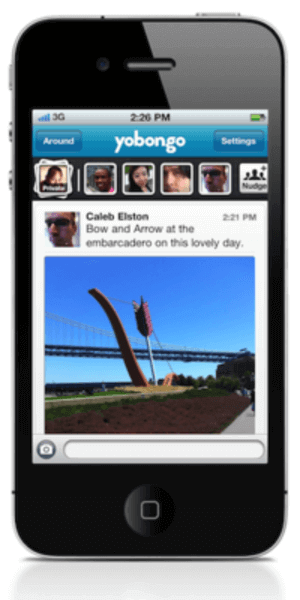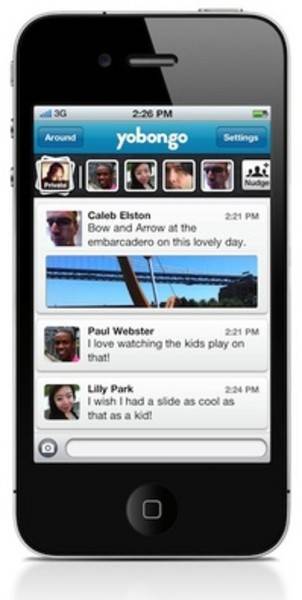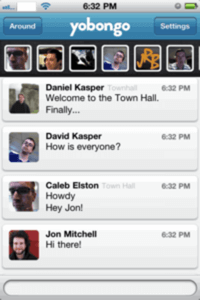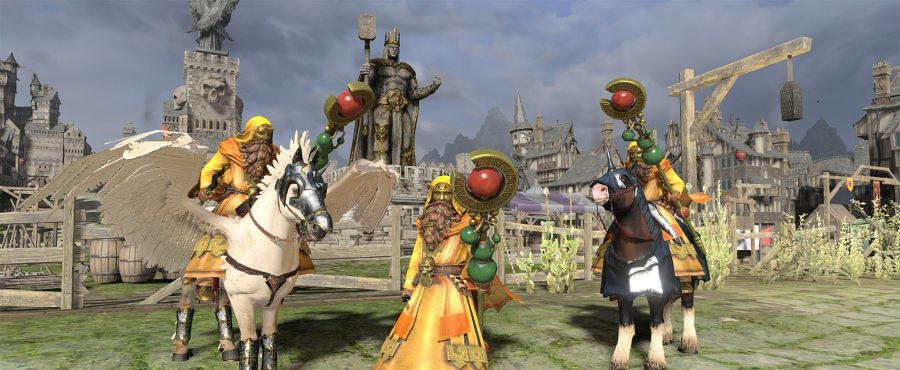Since its launch at South By Southwest Interactive this year, Yobongo has been a quiet startup. It hasn’t made best-thing-since-sliced-bread pronouncements or it’s-the-x-of-y elevator pitches; it has just quietly kept working on its simple promise to, in the words of co-founder David Kasper, “help people communicate with new people around them.” It’s a promise that sounds overly simple until you see what Yobongo does. And today, the location-aware chat service for the iPhone has announced an update worth a thousand words.

Yobongo users can now add photos to the conversation. The app creates mobile chat rooms based on location, allowing users to chat with real people nearby, even people whom they’ve never met before. With Yobongo 1.4, they can now snap (or upload) a picture of where they are, and it will be instantly uploaded into the chat room. With messaging and photo sharing services rolling out from everymajorplayer, these features seem to strike at the heart of the iPhone’s functionality. But Yobongo stands out from this crowd, because its purpose is to help people meet and discover each other. “We started Yobongo to help people make new connections and communicate more efficiently,” says CEO Caleb Elston. “Now we are going to help people communicate even more emotion.”
When you shoot a photo in Yobongo, you get the native camera view, and you use pan and zoom to frame a square shot. You can also upload an existing photo from your library. Yobongo doesn’t store the location data for your photo, it just uploads the image into the chat room and saves the full-size version to your phone. Photos are displayed collapsed in the chat, and they expand with a tap. If somebody gets creepy, users can flag photos. Once an image reaches a certain number of flags, the preview is blurred. Yobongo stores the photos so that users can browse the conversation and see them, even if they weren’t online in the moment.

To identify participants, Yobongo displays avatars, real names, short bios, and a small profile space asking what a user is currently pondering. The smoothly designed user experience feels almost native on the phone. Using Yobongo already felt personal, and the addition of photo sharing will bring everyone in the chat closer together, whether they’re comfortable with that or not. Yobongo makes it okay to talk to strangers, because, if it works as intended, they won’t be strangers for long.
The Town Hall

One reason Yobongo has been so quiet, though, is that the service is only available in a few key areas. Yobongo is currently only open in San Francisco, New York City, and Austin, since its SXSWi debut. If you run the app from anywhere else, it displays a screen that lets you vote on Facebook and Twitter for your community to be next. On July 27, Yobongo held a “town hall,” allowing eager iPhone users outside of its three pilot cities to try the free service for the first time.
Participants in the town hall were eager to learn when and where Yobongo will launch next. Co-founder and CEO Caleb Elston said they had “no timeline to announce now,” but that the team is “committed to getting the Yobongo experience to more people.”
Elston said they held the town hall in order to “get feedback from users about the Yobongo experience, answer any questions they may have, and give people a sneak peek of how the app works currently.”
He found that interest was “an order of magnitude bigger than we anticipated,” which actually caused capacity issues that delayed the event for a few minutes.
It was an interesting choice to call the event a “town hall,” since it was actually a special exception to the service’s local limits, and participants were from all over the United States. Members of the Yobongo team asked how users liked “chatting with people from all over.” The consensus was that the experience was personal enough that it felt almost local.
Even though the participants were divided up into multiple chat rooms, which Yobongo does automatically to keep the chats from getting flooded, the team, including both co-founders, floated between rooms and was responsive to questions and comments from everyone. I asked Elston if he saw any overarching themes between rooms, since I was only able to participate in one. He said, “People were talking about Yobongo, their day, the tech news of the day, recent movies they saw, their desire for coffee,” in other words, a perfectly normal day on Yobongo.
Making Connections
Yobongo wants to serve a local purpose, which is why it has targeted big, dense cities with high iPhone penetration first. Many town hall participants were from rural areas and wanted to know how the service’s definition of “people nearby” would affect them.

Elston said the team was using the town hall to explore those kinds of questions themselves.
“As we think about expanding to more places,” he said, “we want to ensure there are people to connect and communicate with, and so the strictness of ‘nearby’ is important to understand and test.”
Other participants asked about possible business models, and the team, while not offering specifics, was open to the conversation. Town hall participant Michael Stancil asked, “If I’m a local pizza shop, could I sponsor a channel within a 5 mile or so radius of my shop?”
Kasper replied, “That’s definitely a possibility.”
Talking to Strangers
Yobongo’s insistence on talking to strangers does not appeal to everyone, but I found the experience quite natural and enjoyable. One of Yobongo’s most distinguishing offerings is its potential to turn nearby strangers into real-life friends. I asked town hall participants about their views on using Yobongo to meet people in person, and the responses were unanimous. Brent Byington said it was “exactly the point! Love it!”
In considering where and when to launch next, Kasper said the key factors were population density, iPhone penetration, and the number of votes on Twitter and Facebook. Kasper said they’re thinking about revealing the vote standings soon.
Yobongo is free, it’s different, and it challenges our comfort zones. If you’re an iPhone user, download the app, and if you’re outside of the pilot areas, vote for the privilege of trying it (especially if you’re from Portland, Oregon). Other social apps are designed to keep bringing you back in. Why not try one designed to draw you out into the world?
Do you like the idea of chatting with new people nearby?




















